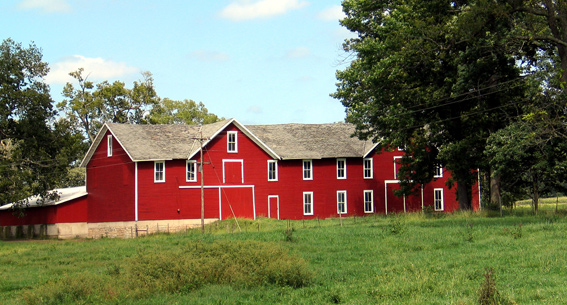According to National Lampoon’s Christmas Vacation’s Clark W. Griswold, the tree is the “most important of Christmas symbols.” Now, whether or not you share his enthusiasm or sentiment for the holidays, it is good to know the difference between trees as some of you make that annual trek to the tree farm to pick out that one, perfect tree to adorn with those treasured ornaments and brightly colored lights. Learning to identify them even in your landscape is helpful as they have differences in pruning time, as well as providing the first step in diagnostics if ailments arise.
There are three popular types of trees grown for Christmas trees in Ohio. One is the pine. Although there are many different types of pines, they share one characteristic. Their “leaves” aka needles are attached to the stem in bundles or clusters of two, three or five needles depending on the species. These include White pine (5 needles) and Scotch pine (two needles).
Another type is spruce. The needles of the spruce are attached individually to the stem; are sharp and pointy; and are square which makes them easy to roll between your fingers. Making them even more distinguishable from other species is that spruce needles are attached to the stem by small, wooden structures, which remain on the stem when the needles are shed making the branches very rough.
The final, arguably the most popular type of tree, is the fir. Like spruce, fir needles are attached singularly to the stem, but lack the wooden structures making a needleless branch feel smooth. In contrast to spruce needles, fir needles are flat and cannot be rolled easily in your fingers.
Another distinguishing feature of these conifers are the cones. Now, all conifers produce cones but the true pinecones are woody, rigid and sturdier, while the cones of the spruce are more delicate with thinner scales. Fir trees also have cones, but they often fall apart on the tree making finding one on the ground a rarity.
No matter which species you choose to be the centerpiece to your holiday décor, care for a live tree is the same. 1) If you bought an already cut tree, trim ¼” off the base of the trunk before you put it in the stand so that it can readily absorb the water. 2) One clean cut is all that is needed as the xylem which conducts water to the tree is located on the outside wood. Any complicated cuts, drilled holes or tubing does not improve absorbency. 3) Nothing but cold, clean water. There are many home recipes online for using additives to keep your tree “fresh” such as vodka, 7-Up, bleach, aspirin, sugar and others, but they are not needed. 4) A stand that holds a quart of water for each inch of stem diameter is ideal.
For questions about tree care or other horticulture related topics, please call Ohio State Extension in Miami County at 937-440-3945 or email bennett.709@osu.edu. May your tree look great! Be a little full and have a lotta sap.

